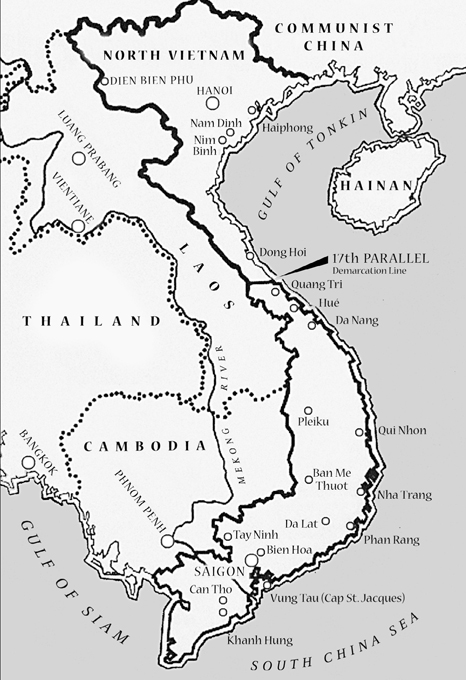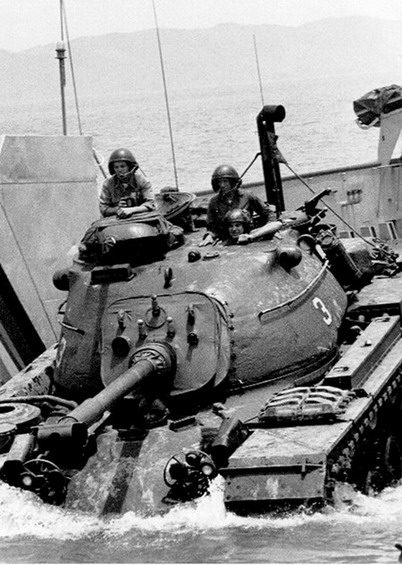Vietnam
Authors: Nigel Cawthorne


VIETNAM
A WAR LOST AND WON
Nigel Cawthorne


This edition published in 2011 by Arcturus Publishing Limited
26/27 Bickels Yard, 151–153 Bermondsey Street,
London SE1 3HA
Copyright © 2003 Arcturus Publishing Limited
All rights reserved. No part of this publication may be reproduced, stored in a retrieval system, or transmitted, in any form or by any means, electronic, mechanical, photocopying, recording or otherwise, without written permission in accordance with the provisions of the Copyright Act 1956 (as amended). Any person or persons who do any unauthorised act in relation to this publication may be liable to criminal prosecution and civil claims for damages.
Edited by Paul Whittle
Jacket and book design by Alex Ingr
Cover image © Getty Images
Photographs © Robert Hunt Library, London, except pp. 8, 88, 91 courtesy of the United States Army Military History Institute
Cartography courtesy of the United States Military Academy at West Point
ISBN: 978-1-84858-414-3
AD000460EN

THE WAR IN VIETNAM
was the longest war in American history. US ground troops were in Vietnam for eight long years. In all the American commitment in Southeast Asia lasted fifteen years. During that time over 50,000 US servicemen died and around 300,000 were wounded, figures which pale beside Vietnamese losses. South Vietnam, America's ally, lost over 200,000 soldiers; Communist North Vietnam lost a further 900,000. It has been estimated that over a million civilians lost their lives and much of Southeast Asia was devastated; even now Vietnamese children are being born with horrifying physical disabilities as a direct result of the US use of chemical defoliants during the war. While America in comparison was physically unscathed, the psychological damage inflicted was incalculable. Vietnam was the first war that America failed to win outright, and left the country bitterly divided. Many of the 2.7 million Americans who served in Vietnam suffered psychologically for decades to come and America discovered that, for all its might and technological superiority, it could not defeat a small and fiercely determined enemy. It is too early to say whether the country has taken that lesson to heart. Now, however, thirty years after US forces pulled out of Vietnam, from a geopolitical perspective, it can perhaps be argued that America did, in fact, win...

An M48 tank comes ashore, Vietnam, 1965.
INTO THE 'NAM
ON THE MORNING
of 8 March, 1965, the Leathernecks of Ninth Marine Expeditionary Brigade stormed Nam O Beach – military designation Red Two – outside the port of Da Nang in South Vietnam, America's ally in Southeast Asia. This was a classic World War II amphibious assault, like that on Guadalcanal, Okinawa, or the beaches of Normandy. Indeed, Nam O had been used by the US Marines as a training beach before the outbreak of the Pacific War.
Six weeks before, Amphibious Task Force 76 had set sail from Japan. Their arrival in the Bay of Da Nang was supposed to coincide with the end of the monsoon, but the officer commanding, General Frederick J. Karch, himself a veteran of the landings on the Japanese-held islands of Saipan, Tinian and Iwo Jima during World War II, said that in the last days the Marine assault force spent bobbing up and down in heavy seas off the coast of Vietnam he experienced the worst weather he had ever encountered in the South China Sea.
Some 3,500 Marines on board the USS
Vancouver
,
Union
,
Mount McKinley
, and
Henrico
anxiously awaited the order to make a frontal assault on the undefended beach of a friendly nation. The Leathernecks – as the Marines called themselves – had been drilled from boot camp that there was no such thing as a friendly beach, but the only thing here that was unfriendly was the weather. As they prepared to disembark, a light drizzle gave way to a strong on-shore wind, creating a heavy swell which snapped mooring lines and made it almost impossible for the Marines to clamber down the nets into the landing craft. H-hour had to be postponed from 0730 to 0900hrs.
At 0903, Marine frogmen reached the beach, pulled themselves out of the surf and made a dash to the line of palms and fir trees that ran along the top of the beach. Hard behind the frogmen were eleven Marine amphibious tractors – LVTPs – carrying 34 men each. They thrust their 45-ton steel hulls through the white foam. With the ten-foot swell, this was a 'high surf' landing and smaller LCVPs had to be abandoned in favour of heavier landing craft. The LVTPs were followed by 61-ton LCM-8s, whose steel jaws disgorged 200 men at a time. Within fifteen minutes, four waves of heavily armed Marines were digging in on the sand just as their fathers' generation had on the beaches of Pacific atolls barely twenty years before.
Fifty minutes later, 1,400 men were ashore, carrying rifles, machine-guns, and grenade and rocket launchers. They were ready for anything – except what actually happened.
A party of pretty Vietnamese school girls came down the beach to greet them and coyly hung garlands of gladioli and dahlias around the necks of the towering Marines. The scene was recorded by the mayor of Da Nang with his new Polaroid camera and the waiting press corps. Banners were unfurled that read: 'Vietnam welcomes the US Marine Corp' and 'Happy to welcome the Marines in defence of this free world outpost'. Throughout it all the straight-backed Annapolis-trained General Karch remained unsmiling. His picture, festooned with flowers, was distributed worldwide by the wire services.
'That picture was the source of a lot of trouble for me [he later told an interviewer]. People said: “Couldn't you have been smiling?” But, you know, if I had to do it over, that picture would have been the same. When you have a son in Vietnam and he gets killed, you don't want a smiling general with flowers around his neck as leader at that point.'
The beach landings were supposed to send a message to the Communist North Vietnamese and their Russian and Chinese allies that the US was not prepared to stand by and watch South Vietnam fall to the Communists. Indeed, although Da Nang had a deep water port and the 3,000 yard runway which was destined to become one of the three busiest airports in the world, an amphibious assault on the beaches was the quickest way to get the maximum amount of men and machines ashore in the shortest possible time. The port had no cranes, heavy duty fork lift trucks, cargo nets, or lighterage – or even a marked channel, and the airstrip was not equipped to handle a large body of men, let alone M-48 medium tanks, 105mm howitzers, and the latest Ontos antitank weapons (tracked vehicles carrying batteries of recoilless rifles). However, the winsome welcoming committee and the prearranged photo-opportunity turned the landing into a farce.
Although the landing had been announced in a Pentagon press release two days before, no one had thought to inform the South Vietnamese government, or even asked their advice – even though the Marines were going in at the 'request' of the South Vietnamese, the press release said. The first the South Vietnamese Prime Minister Phan Huy Quat knew of it was when he was visited by a US Army officer on the morning of 8 March and asked to draft a joint communiqué in English and Vietnamese announcing the Marine landings, which were underway at the time.
The head of the American Military Assistance Command in Vietnam, General William Westmoreland, the US commander in South Vietnam who had requested two Marine battalions to protect the airbase at Da Nang, was also appalled. He had expected the Marines to maintain a low profile. The very public landings were the idea of US President Lyndon B. Johnson. He overruled his ambassador in Saigon, Maxwell Taylor, who had been chairman of the Joint Chiefs of Staff under President John F. Kennedy. Taylor warned that a Marine landing would be the first step in a growing American commitment. Not only would the South Vietnamese expect the US to do their fighting against their Communist neighbour for them, it would look as if the Americans had inherited 'the old French role of alien coloniser and conqueror'. And Taylor doubted whether 'white-faced' Americans could do any better in the forests and jungles of Asia than French troops had.
Despite these dire warnings, there were no objections from Congress or in the American press. Although the Marine landings – America's first commitment to fight on the ground in Vietnam – was the single most significant event of the war, Johnson presented it at home as a short-term expedient. Indeed, the Joint Chiefs of Staff's order directing the landing was modestly entitled: 'Improved Security Measures in the Republic of South Vietnam'. But the military strategists in Hanoi, the capital of Communist North Vietnam, were not fooled. In their eyes the landings on the beaches were viewed as a troop build-up which would cause them new difficulties. They doubted that Johnson would authorise such an enormous expenditure on men and matériel unless he was certain of victory.